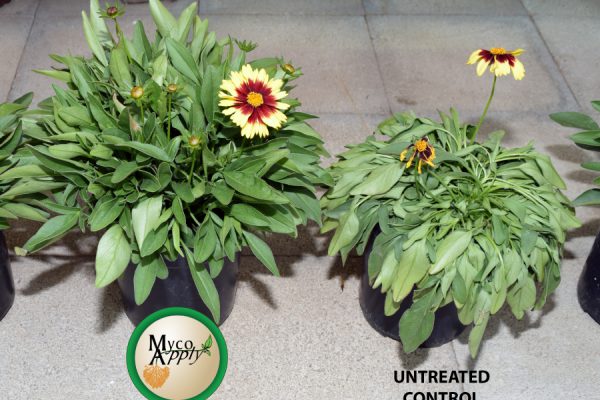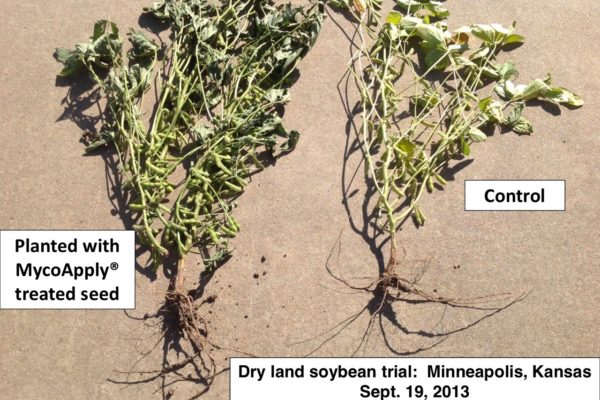Hundreds of millions of years ago, when plants first began to migrate from the seas onto dry land, this massive transition was made possible through the plants’ partnership with an important symbiotic organism: mycorrhizal fungi. And the major benefit that the fungi were able to provide to plants at that time to make this transition (which supports all life on dry land and has led to the green planet that we know and love), was the mycorrhizal fungi’s ability to access, store, and deliver water directly to the plants’ vascular systems.
Acting as a living extension of the plant’s root system, mycorrhizae are able to extend far into the soil to acquire water and moisture that the plant’s roots alone are not able to reach and absorb. Collectively, as the extremely fine threads of mycorrhizal hyphae grow to fill the soil volume of the root zone, they act almost as a sponge to absorb water when it becomes available, and hold onto it for times of need. The fungal structures including the hyphae and the vesicles (in Endomycorrhizae) are essentially microscopic water reservoirs attached to the plant’s roots, which vastly increase the plant’s ability to absorb and utilize this vital resource.
Additionally, mycorrhizal fungi provide secondary benefits to the soil or growing media over time, which improve its physical characteristics in order to allow it to absorb and hold more water. Mycorrhizal fungi are the only soil microorganisms on the planet that produce Glomalin, a sticky glycoprotein that mycorrhizae secrete into the soil. This Glomalin binds soil particles into stable aggregates, which increases the stability and carbon content of the soil, and importantly helps to allow increased water infiltration into the soil, as well as the soil’s overall water holding capacity.
In horticulture trials conducted with potted plants, the mycorrhizal inoculated plants were able to withstand drought conditions for 24-48 hours longer than those that did not have a mycorrhizal symbiosis. This benefit to growers is huge when one considers the labor and water involved in keeping potted plants happy and healthy through the hot summer months.






